
You can spend all the time in the world optimizing your site and building links, but you know there’s got to be more to SEO.
Many people ignore things like schema markup and structured data.
It’s no wonder. They sound so darn confusing.
If schema markup has left you scratching your head, wondering what the big fuss is about, then you’re in luck. In this article, we’re going to be going through some of the most effective schema markup templates and what they mean (so you can get past all the technical talk.)
Let’s begin.
What is structured data?
Structured data is a snippet of code that you place on your website that gives Google more context about your pages.
This code is ‘structured’ in such a way that search engines can easily read and interpret. Hence the same ‘structured data.’
Why is this important to you?
Because it impacts how your listing appears in the search results.
It allows you to take up more space in the search results than competitors. There will also be more contextual data provided in relation to your listing.
The more attractive and informative your listing appears, the more chance you have of securing a click-through.
For example, let’s take a look at these two recipes:
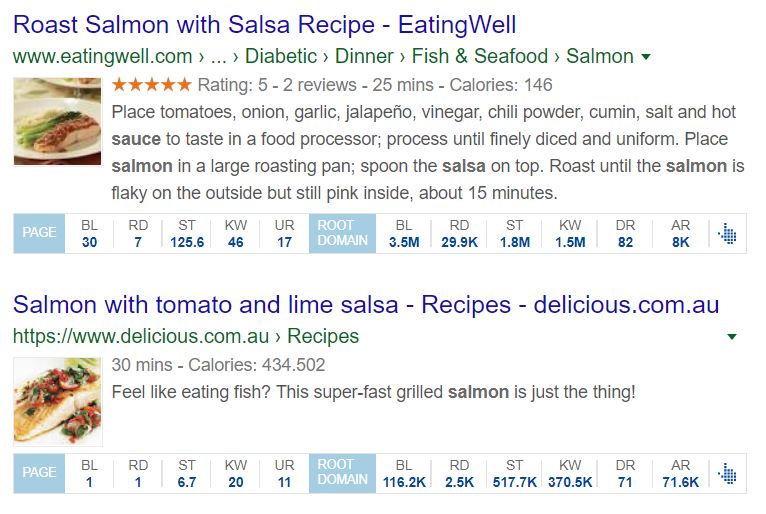
Both of these results display salmon salsa recipes. However, they look pretty different.
Which listing would you click on?
Probably the listing that displays the most valuable information.
The top listing provides a ton more information to encourage the searcher to click through. You can see a five-star rating, calories and cooking time, along with a more detailed description. The second listing has one line of content and clearly doesn’t benefit from structured data.
Some may argue that all the information needed can be found in the Google listing. There is no need to click through to find out more. However, the chances are that people won’t want to read a small description and will click to read the instructions in detail.
What is schema markup?
Not to confuse things, but a schema markup is a form of structured data. It can be used across a variety of industries to offer more context to your pages. You will require different types of schema depending on the function of your business.
Here are some of the content types that schema helps you rank better for:
– Articles / Author Name
– Restaurant
– Local Businesses
– Movies & Events
– Book Reviews
– Products
For example, the author of the article is Emily Cocker. A search engine will see this and will produce a search entry with “Emily Cocker.” However, if you add schema, then Google will know that Emily Cocker is the author of the article and not some words on a page. The search engine can now provide more informed results when someone types in that name.
Because schema markup uses a unique semantic vocabulary in microdata format, coding skills aren’t required. Great for all these technophobes.
Use Schema.org to find and select different types of schema. It’s an industry-standard, which the majority of marketers use the locate the right schema for them. Simply copy and paste the code (similar to HTML) into a section on your website.
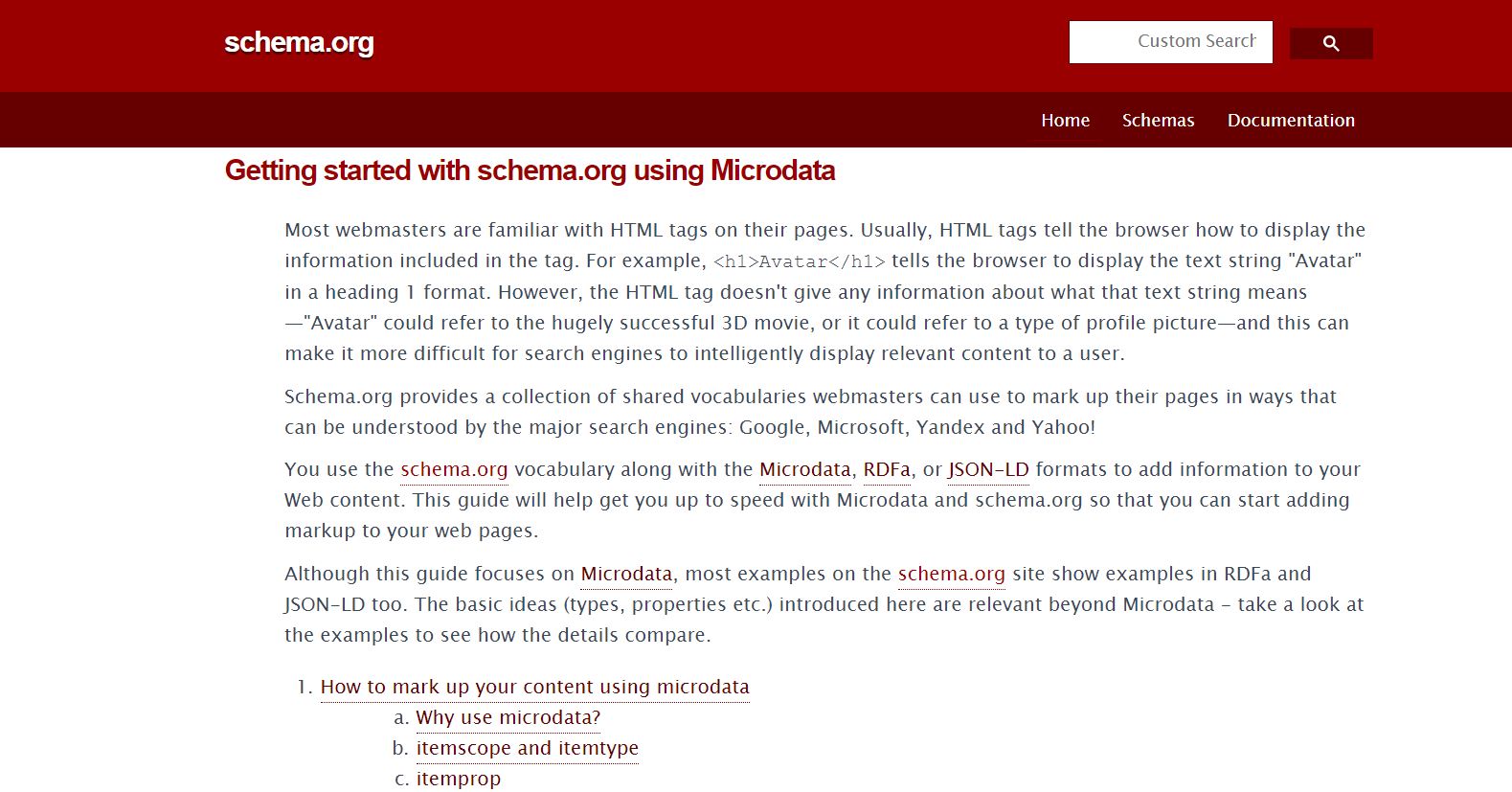
Websites that utilise schema markup rank better in the search results than those without. In some cases, you can jump four positions simply because of the addition of schema. It tends to make the most impact on websites that already rank on the first page of Google.
Right now, one-third of Google’s search results incorporate rich snippets, which include schema markup. These results take up so much search engine real estate and yet so few people actually use schema markup.
How to add schema to your website
Now you understand a little more about schema markup and how it can help improve your online visibility, let’s move on to setting it up.
This can be a lengthy process depending on the content management system you use and the level of control you want over the process. Schema can be as detailed as you want, so keep that in mind. It’s not always a simple fix.
1) WordPress plugins:
The most simple way to implement schema is using WordPress. If you are one of the millions to have a WordPress website, this will be relatively straightforward for you.
There are some great plugins that make using schema across all areas of your site a breeze. One of the best is Schema App Structured Data.

This plugin allows you to upload any schema file, from the above list, and apply it to any area of your site. Pretty simple, right? Then, all you need to do is edit the text to suit your business. Keep it in line with the content on your page to ensure that Google has as much information as possible.
2) Use Structured Data Markup Helper
Many people don’t use WordPress and therefore require an alternative method of schema markup. The Structured Data Markup Helper tool will work for any website and is provided by Google to help webmasters.
First, you’ll be asked to enter the URL of a page you want to mark up. You’ll also be asked to select a type of schema that you wish to implement. The choices may seem to limit but, trust me; there will be an option for your business.
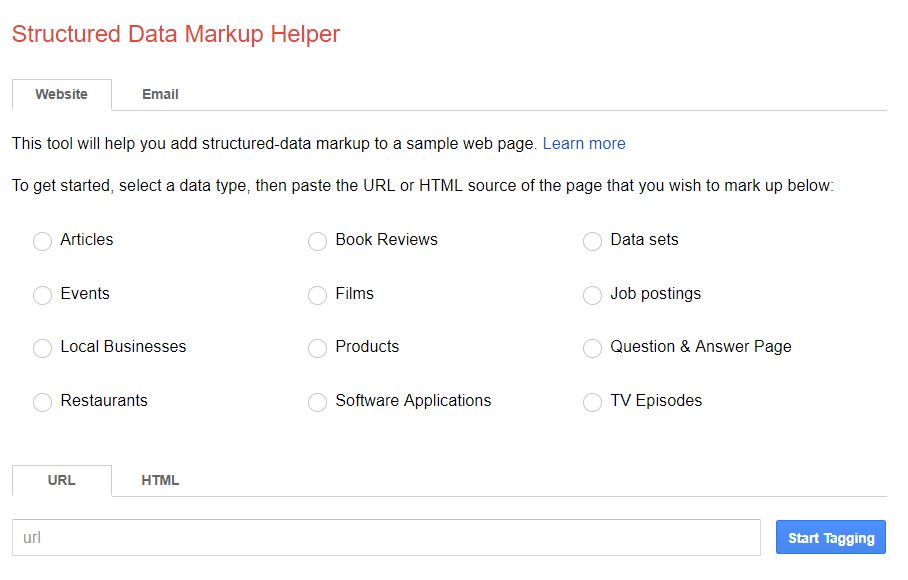 For the sake of this article (and because this is an article), I’m going to select ‘Article.’
For the sake of this article (and because this is an article), I’m going to select ‘Article.’
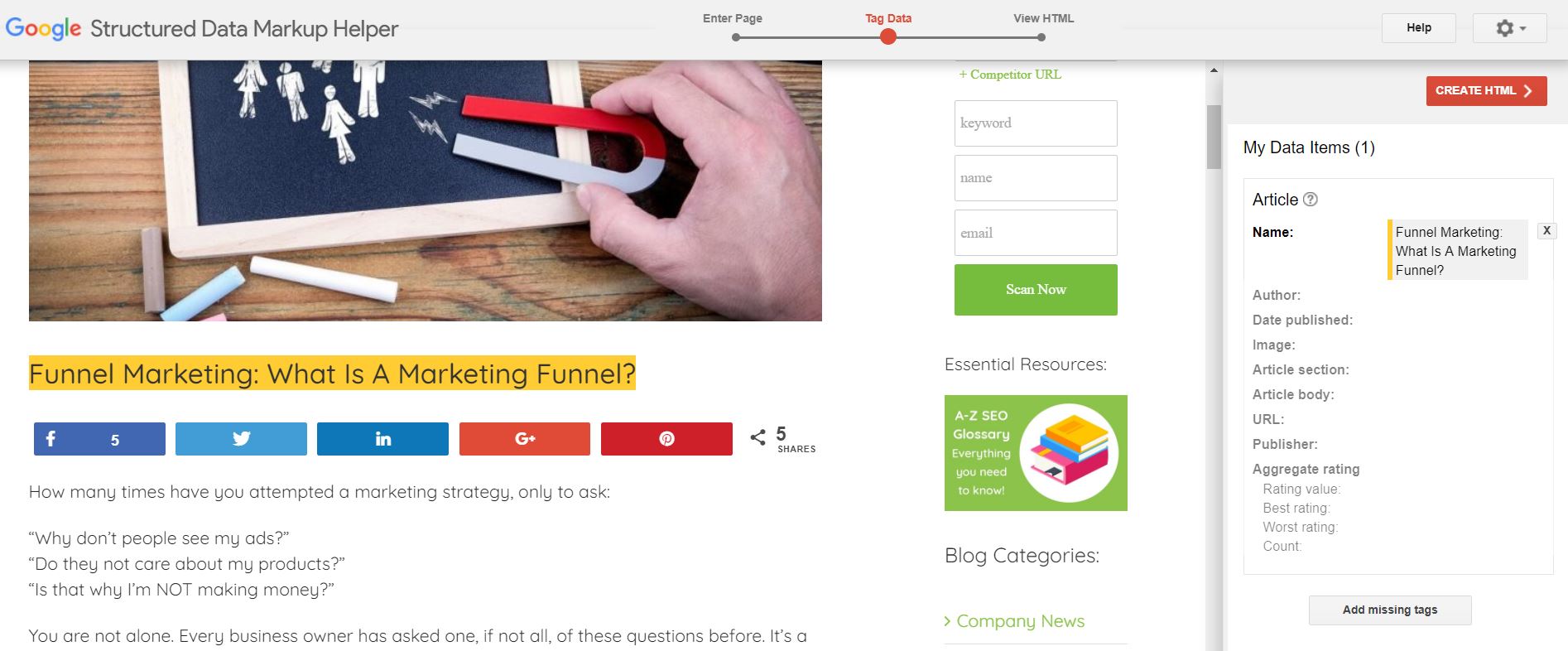
You will be presented with a screen like the above. There will be options to mark up certain elements of your page. To do this, simply highlight the text in the left panel.
For example, you can see the title highlighted in yellow. On the right side, I have clicked on the ‘Name’ section to indicate that ‘Funnel Marketing: What Is A Marketing Funnel?’ is the name of the article.
That’s the basics of the Structured Data Markup Helper. The process remains the same no matter what elements of a page you want to mark up. You can even mark up images to ensure that Google knows to rank them in the image search results.
You don’t have to mark up everything listed in the tool, but I would strongly advise doing so to ensure you provide Google with the most information possible.
Once finished, click the HTML button in the top right-hand corner. 
Now comes the most critical step; adding your mark up to a website. Schema is code written in HTML, which means that it needs to be copied in the source code.
It’s super simple for those with static pages. It’s a case of deleting the current source code and copying in the new one.
Unfortunately, for most content management systems, this option does not exist. For the likes of WordPress, each section of copy is separated, making it a much trickier task. You will have to go to the theme editor and manually insert the code. When done wrong, this can royally screw up your website. I’d always advise speaking to a professional web developer before implementing schema for yourself.
3) Do it manually:
The third and final option I’m going to present is a manual input. This follows on from my above pint about messing things up. If you’re not careful, you can do some damage.
But keep in mind that manually entering schema does have it’s advantages.
For one, the above tools are somewhat limited as to the schema you can enter. Manually entering schema allows you to go into as much depth as is needed. You can ensure that everything is as you want it to be.
If you are confident and have coding experience, this may be an option for you!
Schema markup is evolving
Google aims to please searchers with refined and accurate results. For this reason, schema markup is like gold dust. It helps Google better understand your content and position it in front of people who are interested in what you have to offer.
This hasn’t gone a miss with Google, either. Schema markup is forever evolving to apply to more businesses. For example, FAQ schema was recently added to the mix. If your website has a list of questions and answers, then take note.
Google pulls all the FAQ’s from a website and displays them in the search results:
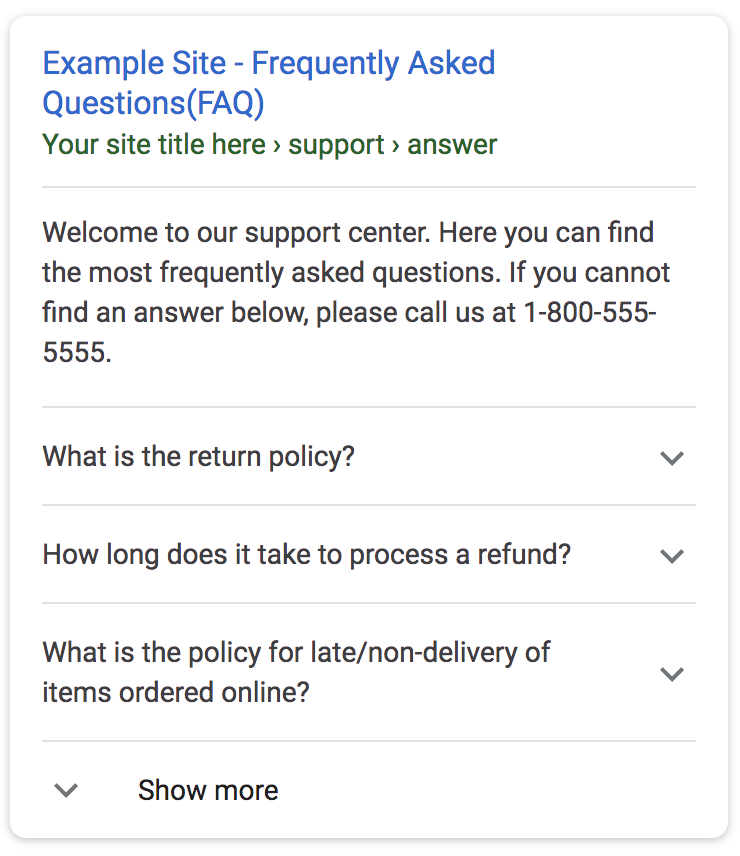
As you can see, the result looks different from all others, which makes it stand out. And what’s better? It only takes 30 minutes to kick in!
Not many people know about these hacks. If you get in there early, then you can benefit from these new schema markups. You can, quite literally, take up the majority of the Google search results and win a ton of clicks.
Author Bio:
 This article created by Senior Digital Strategist, Emily Cocker. She works for the full-service digital marketing agency, Bigfoot Digital.
This article created by Senior Digital Strategist, Emily Cocker. She works for the full-service digital marketing agency, Bigfoot Digital.
The company delivers ecommerce website design with SEO built-in for maximum online visibility. If you are looking for online marketing that delivers an ROI, then get in touch on 01226 720 755.


